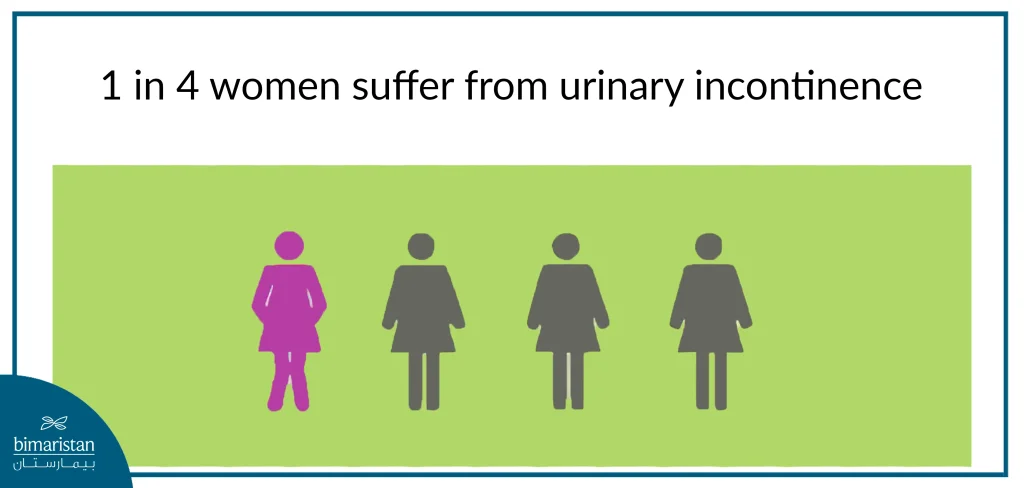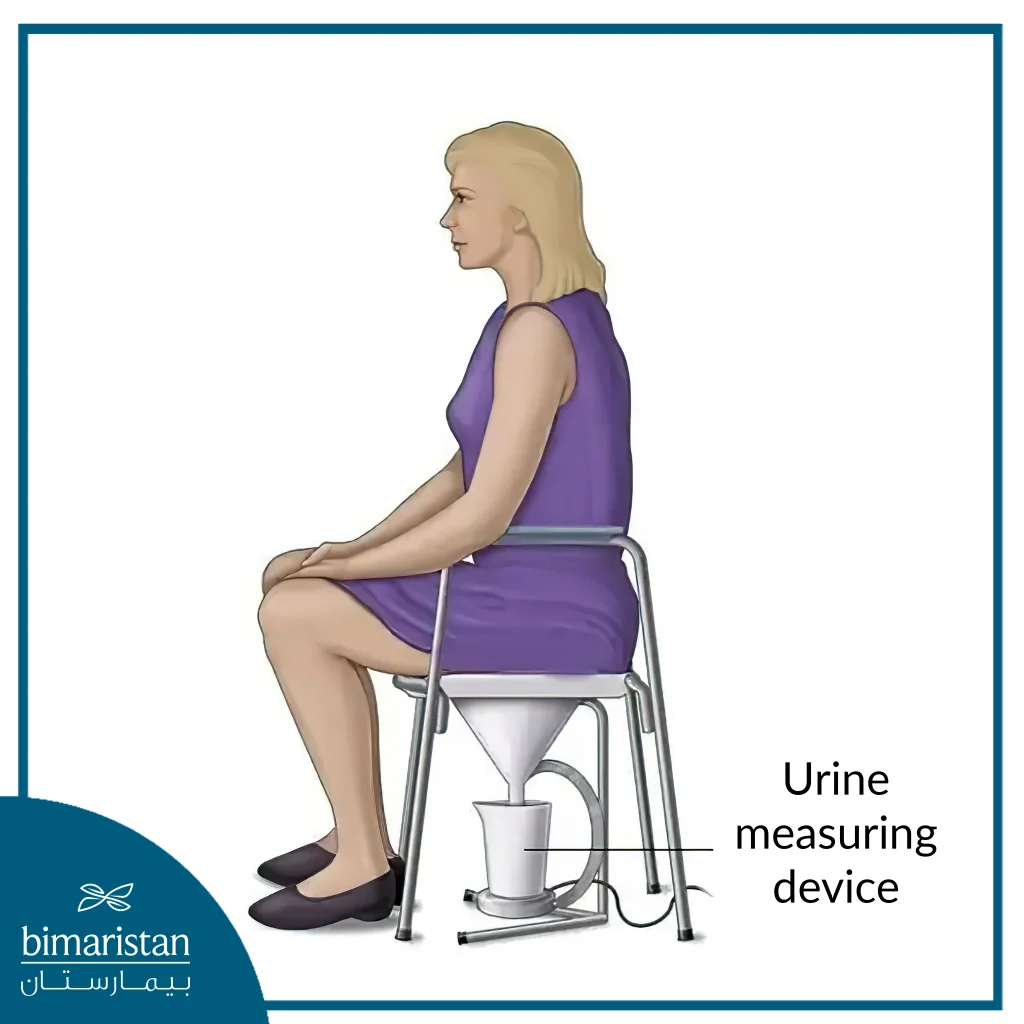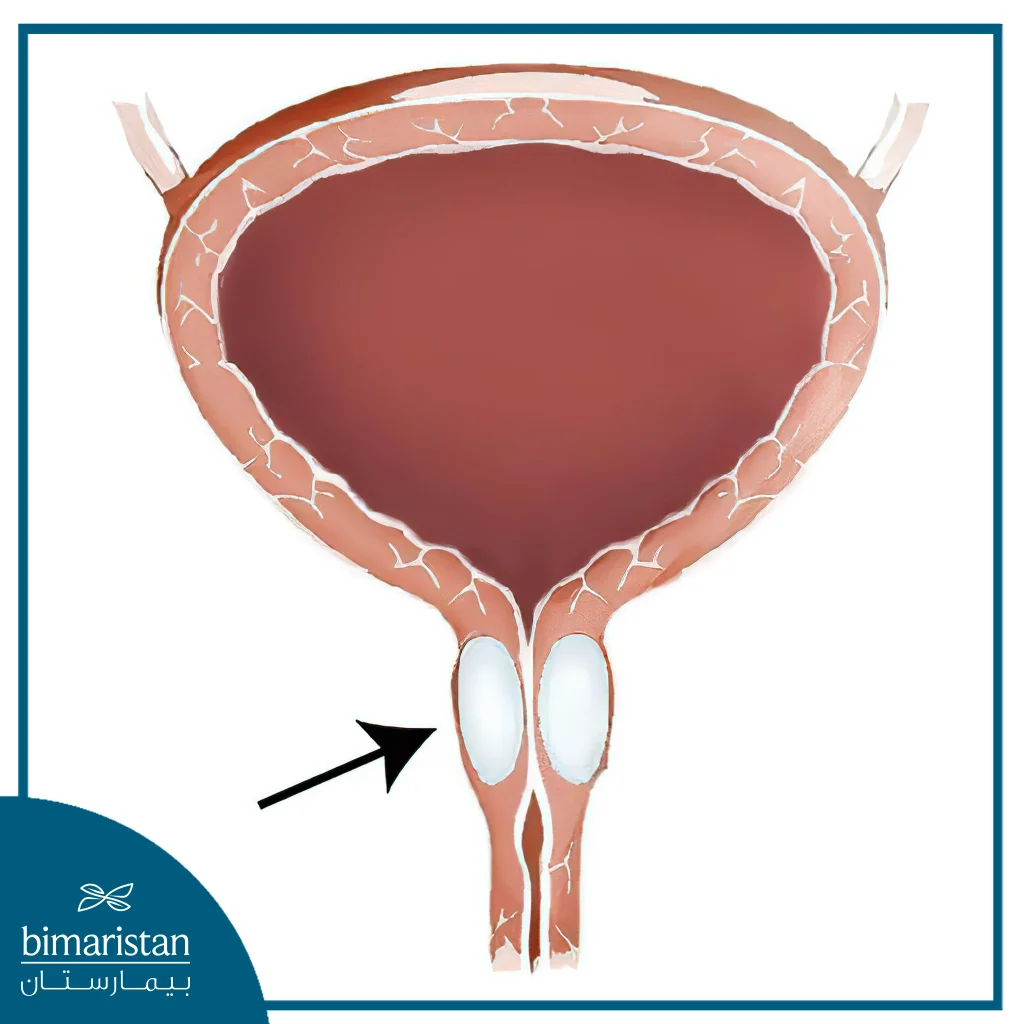Urinary incontinence in women is a real problem for many, as the lack of control over urine in women greatly affects their quality of life, so Turkey has conducted several studies in this field.
Urinary incontinence in women is the loss of control over urine leakage, as urine leaks without the patient’s will, which causes great embarrassment and discomfort to her, and this condition increases significantly with age.
The causes of incontinence in women are many, and urinary incontinence has several types and categories, so can urinary incontinence in women be treated permanently? What are the medications for treating urinary incontinence in women? What are Kegel exercises to treat urinary incontinence in women? Follow us in this article.
What is urinary incontinence in women?
Urinary incontinence in women is the involuntary release of urine, which affects men and women, but it is more common in women, especially with age.
It is difficult to determine the exact number of women with urinary incontinence because many women feel very embarrassed to talk about it; it may be embarrassing and annoying to them and can affect every area of a woman’s life.

Some women stop going out or exercising. Because of this, urinary incontinence in women can affect their sex life, social life, and relationships and sometimes lead to depression.
How do I know if I suffer from urinary incontinence?
Involuntary leakage of urine: This is one of the most common symptoms, and it can happen when laughing, sneezing, coughing, exercising, or standing.
Types of urinary incontinence in women
There are two main types of urinary incontinence in women:
Urge incontinence
In this type, women feel a sudden need to urinate without warning, and it is difficult to postpone (they have to go to the toilet immediately).
Stress incontinence
Stress incontinence in women occurs when urine is released when you sneeze, cough, or strain yourself.
It can also be “mixed incontinence,” which means that some women may suffer from both stress incontinence and urge incontinence.
Overactive bladder occurs when you feel a strong urge to urinate frequently, including at night, and sometimes this leads to urge incontinence.
Read also on our website about ureteroscopy in Turkey and robotic surgery for kidney cancer treatment in Turkey.
Urinary incontinence in women symptoms
The main symptom of urinary incontinence is urine leakage, but this can vary slightly, from leaking a few drops to partially or completely emptying the bladder.
Women with urge incontinence may not be able to reach the toilet in time; some women also need to go to the toilet at night, and sometimes leakage occurs at night as well.
If you have stress incontinence, the main symptom is urine leakage when you do things like coughing, sneezing, laughing, lifting something heavy, or exercising.
You may have other symptoms, such as:
- The need to urinate often
- A feeling of pressure in the vagina
- Urine dripping after you go to the toilet
- Burning when you urinate
Causes of urinary incontinence in women
The cause of urinary incontinence in women depends on the type, so the causes of urinary incontinence in women vary from one woman to another.
Urge urinary incontinence occurs when the bladder wall muscle contracts when you don’t want it to, which makes the patient feel the need to urinate urgently. This can develop as you get older or be due to other medical conditions such as neurological diseases such as stroke or multiple sclerosis.
Some things that increase the likelihood of developing incontinence:
- Pregnancy and childbirth: This leads to tightening and weakening of the pelvic floor muscles, which may cause urinary incontinence in women. Vaginal birth or cutting the perineum (the area between the vagina and anus) during childbirth or pregnancy are all associated with stress urinary incontinence.
- Weight gain
- Constipation
- Age: The older you are, the more likely you are to develop any type of urinary incontinence.
- Other close family members suffer from stress urinary incontinence.
- Genital prolapse: This occurs when one or more pelvic organs, such as uterine prolapse, slip down from their normal position and bulge into the vagina.
Other causes of urinary incontinence include:
- Urinary tract infections
- Drinking too much caffeine
- Medical disorders such as Parkinson’s disease
- Long-term severe coughing
- Strenuous physical activity such as weightlifting
Learn about: Causes, symptoms, and treatment of vaginal cancer in Turkey
Diagnosis of urinary incontinence in women
If urine leaks from you involuntarily and bothers you or affects your daily life, you should see a specialist doctor.
The doctor will ask you about your symptoms and medical history. Knowing this will help your doctor know what type of urinary incontinence you have and rule out any underlying causes. Your doctor will also ask you about any medications you may be taking.
The doctor will also do a physical examination. He will feel your abdomen and may perform an internal examination. This means putting a finger in your vagina and asking you to squeeze your pelvic floor muscles. This can help show how well they are working.
Your doctor may ask you to keep a record of how much urine you pass when you go to the toilet for a few days and whether you have urinary incontinence.
It is best to record this on both working and non-working days to give a complete picture.
Read about: Female infertility treatment – the latest techniques with injections and cells.
Tests to diagnose urinary incontinence in women
Depending on your symptoms, your doctor may order a urine test to see if you have an infection or infection.
They may also refer you to a specialist for further tests, such as:
- An ultrasound scan of your bladder after urinating
- Urodynamic tests

You can also read about kidney stone treatments in Turkey on our website.
Treatment of urinary incontinence for women
Treatment of urinary incontinence in women usually starts with less invasive treatments first, which means trying lifestyle changes, as well as other treatments, before considering surgery, and the treatment you need depends on the type of urinary incontinence you have.
There are three main treatments for stress incontinence:
Kegel exercises to treat urinary incontinence in women
The pelvic floor muscles help control the bladder and bowel, and strengthening these muscles with these exercises can sometimes help relieve urinary incontinence.
You will be shown how to do these exercises and you will need to do them three times a day for three months to see if they help or not, if you have problems with pelvic floor muscle tension, using biofeedback and electrical stimulation may help.
Biofeedback is when sensors placed on your skin or in your vagina send signals to a monitor when you squeeze your pelvic floor muscles.
This can help you see how well you’re doing. Electrical stimulation uses an electrical current to stimulate the pelvic floor muscles from a small electrical probe placed in the vagina.
Read about: Causes, symptoms, and treatment of kidney stones in Turkey

Medications for treating urinary incontinence in women
Some medications may help treat urinary incontinence, but they often cause side effects and are not usually given as a first-line treatment. If you do not want surgery, your doctor will prescribe the best medication for your circumstances.
Urinary incontinence surgery in women
There are several surgical procedures to treat urinary incontinence, depending on the cause of your incontinence. Your doctor will often suggest urinary incontinence surgery if you have tried non-surgical treatments first and they have not worked.
Urinary incontinence surgery in women in Turkey
If less invasive treatments do not help, your doctor will refer you to a specialist to discuss surgery. The main types of urinary incontinence surgery include:
Vaginal suspension
Vaginal suspension is a procedure to treat stress urinary incontinence. Stress urinary incontinence occurs when you accidentally urinate because you do something that puts extra pressure on your abdomen and bladder. Extra stress can be caused by laughing, coughing, sneezing, exercising, or jumping.
Stress urinary incontinence in women can be caused by changes in the muscles and ligaments that hold the bladder together and prevent urine leakage, known as the pelvic floor muscles, and the sphincter, which is the ring of muscle that closes the bladder.
In vaginal suspension, the surgeon lifts the neck of the bladder into the correct position and holds it in place with stitches. This helps prevent urine leakage.
Vaginal suspension works well as a long-term treatment for stress urinary incontinence in most women. If the procedure is successful and goes well, it can greatly improve your quality of life.
However, vaginal suspension may not be a cure for stress urinary incontinence in women. Full recovery from the procedure can take five weeks or more. There is also a risk of problems during or after the procedure.
Other surgical procedures for treating urinary incontinence in women
- Sling procedure where the surgeon uses a piece of your own tissue as a sling to support the urethra
- Strap procedure where a plastic mesh, similar to a ribbon, is placed under the urethra as support
- A material such as silicone can be injected to thicken and thicken the area around the urethra to help it stay closed
- Using an artificial sphincter is an option that is only used if other treatments have not worked
Read about: Vaginitis | Discover the causes, treatment, and prevention methods

What happens during a vaginal suspension?
You can have a vaginal suspension as either open surgery or keyhole surgery (laparoscopic). Most women have an open procedure because laparoscopic surgery is not available in all hospitals.
If you have an open procedure, the surgeon will make a very low cut in your lower abdomen to allow access to your bladder.
The surgeon will raise the neck of your bladder by suturing the top of your vagina to the tissue at the back of your pubic bone. The surgeon may then place a small camera inside your bladder to check that the sutures are in the right place and that there are no injuries to your bladder.
Read more about: Urinary incontinence in men – causes and treatment in Turkey.
What to expect after a vaginal suspension?
You will need to rest until the effects of the anesthesia wear off. There are medications available to relieve any pain or discomfort you may have.
If you have an open procedure, you may have a tube (catheter) in your bladder when you wake up. This is responsible for draining urine from your bladder into an external bag.
Or the nurses may teach you how to self-catheterise. This is when a disposable catheter is inserted and removed each time you need to empty your bladder. If you need to do this, this is usually only for a few days.
You may have a drain after the operation, which is a tube that runs from the wound into a bag or bottle on the first day to drain any blood or fluid.
It is important that you do not become constipated, as the pressure after the operation can put pressure on the wound, causing pain.
Healing from a vaginal suspension
You will probably be able to return to your usual activities after about four weeks, although some women may take longer than this. You may recover more quickly if you have laparoscopic (keyhole) surgery rather than open surgery.
It is best not to have sex, exercise, or lift anything heavy for six to eight weeks after the operation.
Your wound may be uncomfortable for up to six weeks after the operation. You can take painkillers such as ibuprofen or paracetamol if you need pain relief.
Read about: The latest methods of treating neurogenic bladder in Turkey
Complications of vaginal suspension
Most women recover well after vaginal suspension surgery, however, it does not necessarily work for every woman and some women may continue to suffer from urinary incontinence after the operation.
Possible complications include:
- Infection, which can be in the wound, inside the pelvis, or a urinary tract infection
- Bleeding
- Problems passing urine
- Overactive bladder (you may need to pass urine more often and urgently)
- Damage to the urethra or bladder
- Prolapse of the uterus, where part of the uterus moves downward, creating a bulge in the vaginal wall
- Pain during sex
Treatment of nocturnal enuresis in women
There are several things you can do to help treat nocturnal enuresis in women. Your doctor may suggest some of the following:
- Cutting down on caffeine
- Losing weight if you are obese
- Changing the amount of fluid you drink each day
- Treating any constipation means eating more fruit and vegetables and drinking plenty of fluids
- Doing less strenuous exercise
You may also find it helpful to use incontinence products, for example:
- Wearing pads in your underwear to absorb any leakage.
- Using a portable urinal.
- Using devices that you insert into the urethra or vagina to prevent leakage (they cannot be used all the time, but they may help temporarily in some situations, such as during exercise).
- Learn self-catheterization (inserting a thin, flexible tube into the urethra to drain urine when needed. If this is the right option for you, a urinary incontinence specialist will teach you how to do this).
Ultimately, we find that urinary incontinence in women or lack of control of urine in women has negative effects on the patient’s psychology and life, so you should not be ashamed of this problem and consult a doctor about it to get rid of this problem once and for all.
Read about:
Urinary tract infection in women | Causes and best medications
Chronic cystitis in women in Turkey
The comprehensive guide to urology in Turkey
Sources:
